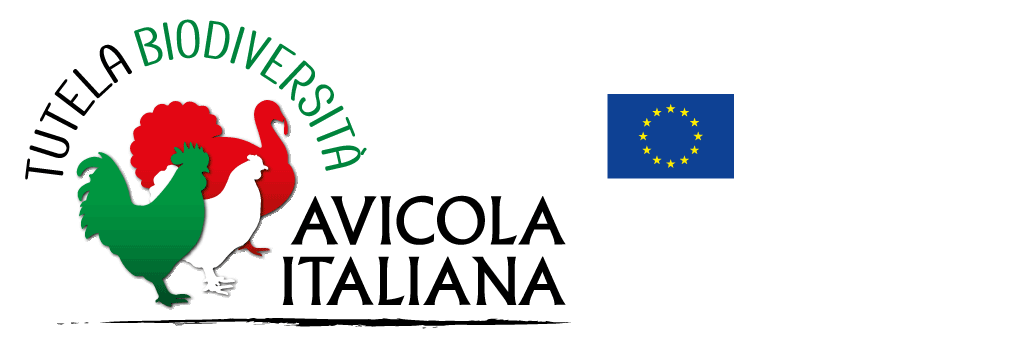Modenese
Synonyms or local names: Gallina modenese, Fulva di Modena
Geographic origin: Province of Modena
Geographic distribution: Countryside around Modena
Estimated total population size: 20 (Castillo et al., 2021)
Extinction risk status (FAO, 1998): Critical
Any other specific information: Medium to large-sized breed
Historical origin of the breed
Historically present in the Province of Modena, the gallina Modenese (Modenese hen) is cited in several assays as a local breed. Important proofs of the long-standing presence of this breed in Emilia’s countryside are represented by the many paintings by the painter Gaetano Chierici (1838-1920) and by the painter and photographer Eugenio Zampighi (1859-1944), that immortalised these birds. These seem to confute the recent hypothesis according to which the origin of the Modenese breed should trace back to crossbreedings of White Livorno, Gold Livorno and Padovana comune (Megiarola migliorata) chickens performed in the 1940s, but cannot rule out the possibility that these breeds may have been used to improve egg laying attitude.
Up to a few decades ago, the Modenese breed was spread in the countryside and appreciated for both meat and eggs. However, the recent diffusion of fast-growing, more profitable hybrids have gradually reduced its numerousness. The extinction of the breed was prevented by the Serafini family, from Nonantola, that maintained a few pure breed birds, and by their collaboration with prof. Zanon, from the University of Parma, that led to the creation of a specific project aimed at studying the breed.
Bibliography
Mazzon I. (1932) Pollicoltura Padovana. Rivista Padova, N. 11,10-26; Padova
Clementi F. (1950) La Pollicoltura Italiana III edizione. Editore Novissima Roma
Zanon A., Bigi D. (2022) Atlante delle Razze Avicunicole Autoctone. Edagricole
Qualitative morphological traits
Feather morphology: Normal
Feather distribution: Normal
Plumage structure: Well adherent, soft
Plumage colours: Wheaten gold (Dorata frumento), Golden wild (Selvatica oro)
Other colours reported in the past: White, Black, Blue (ash grey), Cucula (grey), Very light fawn (yellow), and Wheaten (pencilled fawn)
Colour features: Multi-colour, with sexual dimorphism
Colour pattern:
Wheaten gold – In the male, head red brown, cape and saddle gold brown, lighter in the lower part. Cape is free from black striping. Back, shoulders, and small coverts chestnut-brown. Wing bar black with green sheen. Primaries blackish, secondaries inner web blackish, outer web brown forming wing bay. Breast, belly, and thighs black with green sheen. Tail black with green sheen. In the female, head wheaten to hazel. Cape uniform gold brown, some striping is admitted. Breast wheaten. Belly and thighs hazel-wheaten. Back and rest of the plumage wheaten. Wing bay a little darker. Black permitted in inner barbs of the remigees. Tail feathers grey-black shaded with brown. Tail coverts wheaten. An overall darker colour pattern is permitted.
Golden wild – In the male, head golden-yellow, with cape that can be both golden-yellow lighter in the lower part and uniform golden-yellow with black striping. Back, shoulders, and wing coverts brilliant dark red. Hackles golden-yellow with black striping. Main wing coverts black with metallic blue/green sheen. Primaries black, with narrow brown edging on the outer web. Secondaries inner web and point black, outer web brown forming the wing bay. Breast black with green sheen free from traces of brown. Belly and thighs black. Tail black with strong green sheen. Down greyish. In the female, head golden-yellow, cape golden-yellow with black striping. Overall plumage brown-gold with coarse black peppering and slightly lighter rachis. Primaries black with narrow light grey edging on outer web. Secondaries inner web grey and outer web peppered grey. Breast salmon. Belly and thighs brown-grey. Tail black, main tail coverts marked like the rest of the plumage.
Comb type: Simple comb, large, held upright in the male, falling to one side in the female, especially in early oviposition
Comb spikes: Six spikes or more
Ear-lobe colour: Pure white, cream white, or ivory white
Beak colour: Yellow, sometimes turning to horn in the upper part
Iris colour: Orange-red to brown
Skin colour: Straw to intense yellow
Shank colour: Yellow
Shank feathering: Free from feathers
Other specific and distinct visible traits: Strongly developed wattles
Quantitative morphological traits

Genetic traits
Characterisation of the breed with Single Nucleotide Polymorphisms (SNPs)
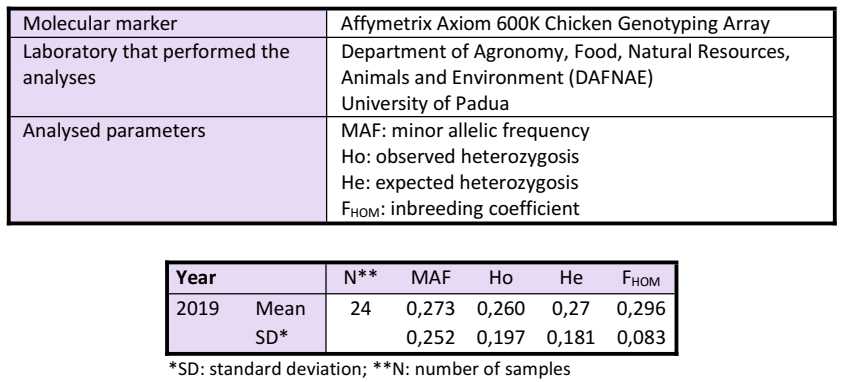
Characterisation of nucleus populations with microsatellites and mating plans
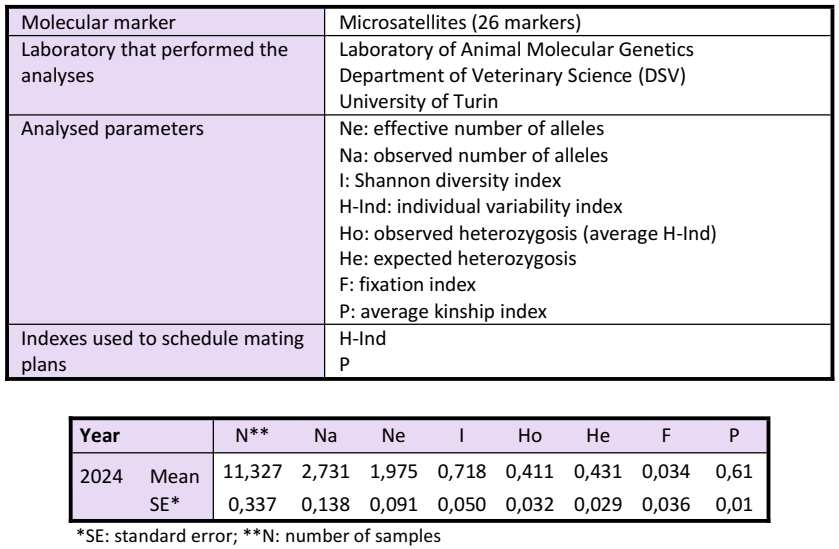
Reproductive and productive quantitative traits
Oviposition, brooding and incubation data
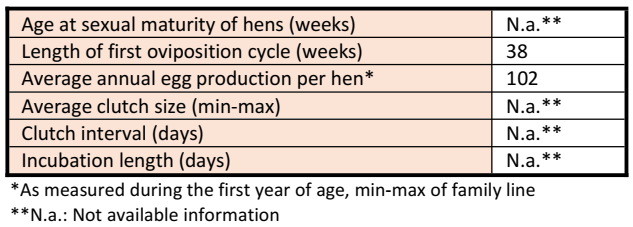
Egg-quality traits

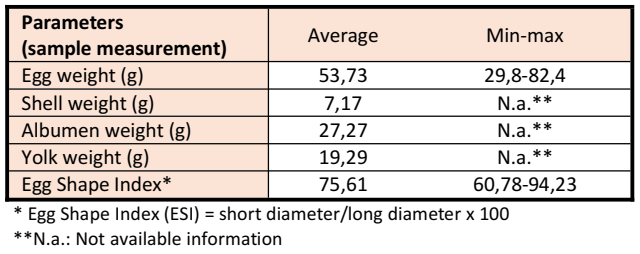
Reproductive traits

Body weight and growth data
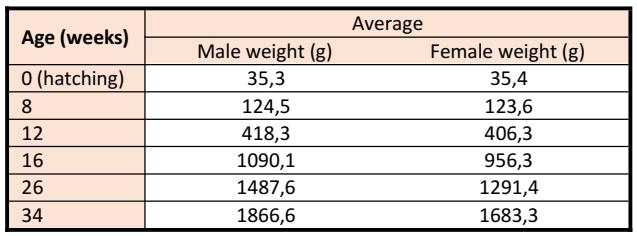
Slaughter data (age: 210 days; males)

Rearing traits
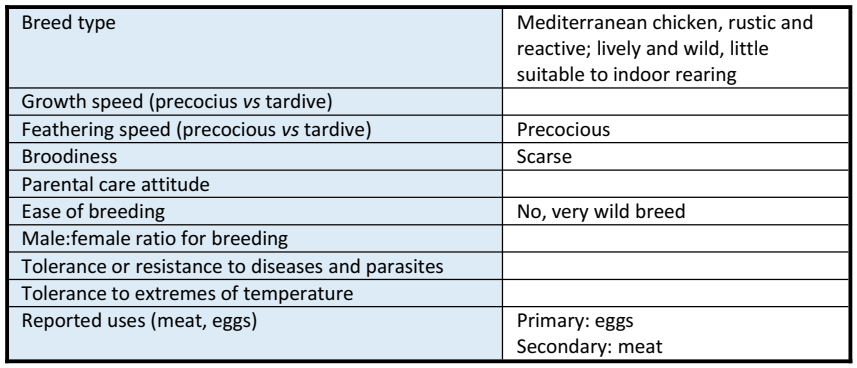
The presented data were registered in the nucleus population conserved at the University of Parma, Department of Medical-Veterinarian Sciences.
Latest update: March 4th, 2024
Germplasm collection
The breed has yet to be conserved in our Cryobank.
